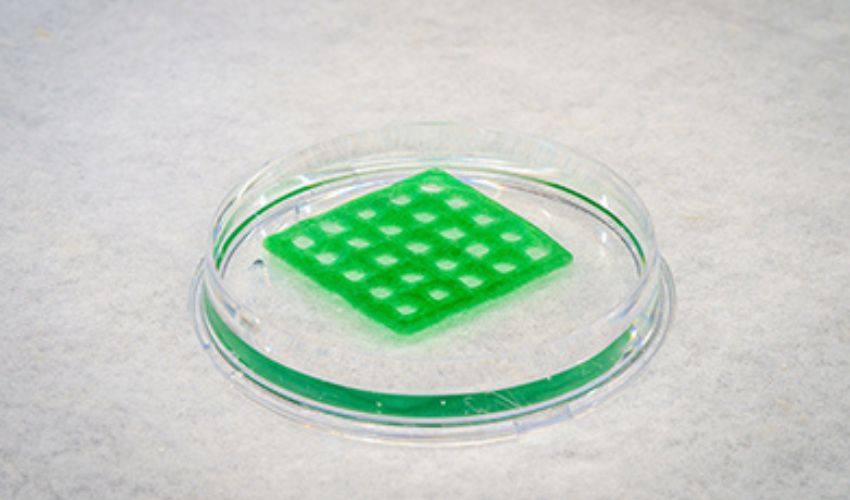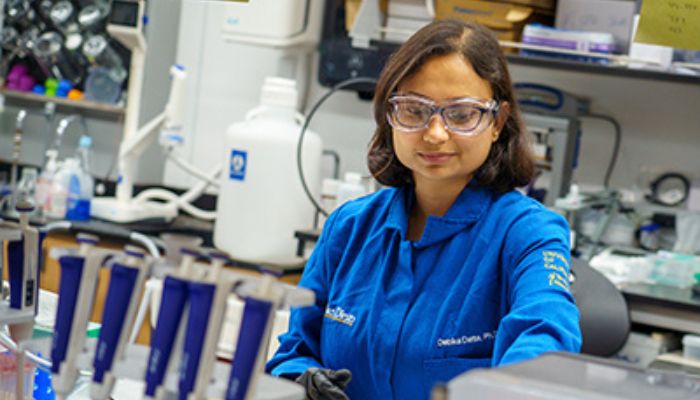3D Printed Living Material Could Help Clean Up Pollution

With over 350 million metric tons of plastic waste generated globally each year, it is imperative that steps be taken to clean up, recycle, and recover parts of our world that have been inundated by pollution. One such pressing concern is the amount of pollutants in our water, where hazardous materials such as plastics make their way into rivers, lakes, oceans and other water supplies in their untold millions daily. Now, researchers at UC San Diego hope that a recently created, organic, 3D printed living material could prove to be part of the solution to cleaning up our world.
Under the working name of “engineered living material”, the decontamination creation is a 3D printed construction made of a seaweed polymer known as alginate combined with a genetically engineered cyanobacteria designed to remove select pollutants from its surroundings by producing enzymes that break down the structure of harmful materials into benign, non-harmful molecules. This combined mix of seaweed alginate and bacteria is then extruded through a 3D printer into structures that can be designed to float in water or be positioned in various environments.

Photo Credits: David Baillot/UC San Diego Jacobs School of Engineering
“What’s innovative is the pairing of a polymer material with a biological system to create a living material that can function and respond to stimuli in ways that regular synthetic materials cannot,” explains research co-lead and nanoengineering professor at UC San Diego Jon Pokorski regarding the importance of the biological mixture. The all-in-one nature of the living material means that its construction and utility is quite efficient and the possibility for future products is promising. By the end of testing, the researchers settled on 3D printing a grid or waffle-shaped structure which held the benefit of providing the most nutrients to the bacteria while maximizing its decontaminating surface area.
A Microscopic Cleanup Crew
In order to break down pollutants, the bacteria inside the living material secretes an enzyme known as laccase, which in previous studies has been shown to neutralize pollutants such as BPA, a major chemical in polycarbonate plastics such as water bottles. The enzyme has also successfully broken down antibiotics and other pharmaceutical drugs and waste. In their current test of the 3D printed living material, the enzyme was able to break down indigo carmine, a blue dye used to color denim clothing, which can be a polluter of water sources.
Through further tests and modifications, it is hoped that this bacteria structure can continue to break down other dangerous pollutants in our environment. However, the researchers are also well aware that they do not want to replace one pollutant with a potentially dangerous spread of bacteria. To keep those concerns allayed, the bacteria is actually equipped with a self-destruct device of sorts. When exposed to theophylline, a molecule commonly found in things like tea or chocolate, the bacteria is destroyed from the inside.
“The living material can act on the pollutant of interest, then a small molecule can be added afterwards to kill the bacteria. This way, we can alleviate any concerns about having genetically modified bacteria lingering in the environment,” explains Dr. Pokorski. He goes on to say that the research team hopes to eventually modify the bacteria to destroy itself without direct intervention, “Our goal is to make materials that respond to stimuli that are already present in the environment”.
The successful first experiments at UC San Diego were the result of an interdisciplinary effort of biologists, engineers and materials scientists from the Materials Research Science and Engineering Center. Their success opens up new exciting new possibilities for the creation of more 3D printed materials which can help repair the planet and perform the complex task of eliminating waste, one molecule at a time. To read more about their research, you can check the UC San Diego webpage HERE.
What do you think about this 3D printed living material? Let us know in a comment below or on our LinkedIn, Facebook, and Twitter pages! Don’t forget to sign up for our free weekly Newsletter here, the latest 3D printing news straight to your inbox! You can also find all our videos on our YouTube channel.
*Cover Photo Credits: UC San Diego Jacobs School of Engineering







